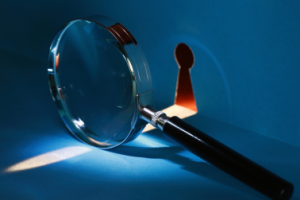The Treatment of Wild-Caught Fish Under EU Conservation Law
The European Union (EU) is one of the few jurisdictions in the world that recognizes animal sentience in its constitutional treaty. In addition to recognizing animal sentience, the EU constitutional treaty also requires the Union and the governments of its individual Member States to “pay full regard to the welfare requirements of animals as sentient beings” in a number of policy areas, including fisheries policy. However, none of the animal welfare statutes the EU has enacted contain binding provisions related to the welfare of wild-caught marine fish.
It is, however, possible to identify EU environmental law measures that do benefit wild fish in practice, and these measures are mostly found in marine ecosystems conservation rules. Although these rules do not aim to protect individual animals’ interests, EU conservation statutes have proved relatively effective in achieving minimal protection levels for fish because, unlike animal protection, the preservation, protection, and improvement of the quality of the environment are constitutional objectives under EU law. The EU constitutional treaty further specifies that the precautionary principle applies fully when it comes to the design and enforcement of EU environmental policy. Such a constitutional principle is consistent with the Charter of Fundamental Rights of the EU, which provides that “a high level of environmental protection and the improvement of the quality of the environment must be integrated into the policies of the Union and ensured in accordance with the principle of sustainable development.”
Over the past 20 years, the EU Legislature has gradually integrated the general principles of EU environmental law in the regulations pertaining to fisheries. From that perspective, 2002 represents a major turning point, with the enactment of Regulation 2371/2002 on the Conservation and Sustainable Exploitation of Fisheries Resources Under the Common Fisheries Policy, which required for the first time that the Union and its Member States apply the precautionary principle in the context of the Common Fisheries Policy. This Regulation specifically requires that the Union and its Member States base all measures pertaining to the exploitation of marine resources on “sound scientific advice.” As evidence that the precautionary principle fully applies to fishing activities in the EU, the Advocate General of the Court of Justice of the European Union recently argued that the Court should invalidate Regulation 2020/123, a quota regulation adopted by the EU, on the grounds that such a Regulation disregarded the scientific advice of the International Council for the Exploration of the Sea (ICES), which advised to prohibit the capture of four particular fish species.
The following article provides an overview of the different marine conservation rules that exist in the context of fishing activities in the EU. In doing so, this article further outlines the limitations of currently existing statutes, in view of the upcoming reform of the Common Fisheries Policy, which will be negotiated over the next few years. Such a reform presents an opportunity for EU lawmakers to bring commercial fishing activities into better alignment with the EU’s environmental and animal welfare constitutional objectives.
1. Fish Protection and Marine Ecosystems Protection
There are several statutes governing the protection of marine ecosystems in EU law, starting with the Habitats and the Birds Directives. These two statutes establish a list of protected marine species as well as a European network of protected areas, which are called “Natura 2000 sites” and which include marine areas. In these areas, Habitats and Birds Directives restrict the capture of animals belonging to protected species and further restrict non-selective hunting methods. However, both directives contain numerous derogations to such restrictions. The Habitats Directive allows Member States to provide derogations for reasons including “[the prevention of] serious damage, in particular to crops, livestock, forests, fisheries, water and other types of property.” Similarly, the Birds Directive allows the adoption of derogations “to prevent significant damage to crops, livestock, forests, fisheries and water.”
Directive 2019/904 on the Reduction of the Impact of Certain Plastic Products on the Environment also aims to preserve marine ecosystems, including by holding fish gear producers liable for the damages caused by their fishing gear.
In practice though, this Directive requires fishing gear producers to pay for the cost of implementing a “collection system” for litter resulting from used fishing gear.
EU law also contains laws that specifically regulate certain areas, such as Regulation 2016/2336, which provides conservation rules applicable to deep sea areas. Protection rules include a prohibition on “fishing with bottom trawls at a depth below 800 meters,” as well as the use of bottom fishing gear between 400 and 800 meters of depth in a list of 87 vulnerable marine ecosystems.
2. Fish Protection and Species Conservation Laws
EU law provides a large array of conservation rules for marine species, including fish. The EU first prohibits certain fish capturing practices, such as shark finning and electrofishing, on the grounds that such practices disproportionately affect ecosystems. Finning, defined in EU law as “[removing] shark fins on board vessels and [retaining] on board, [transshipping] or [landing] shark fins,” has been strictly prohibited in EU waters since 2013 by way of Regulation 605/2013. Specifically, EU law prohibits the fishing of sharks, the removal of shark fins, and the discarding of mutilated animals into the sea. Instead, sharks who are captured for their fins must be killed and their carcasses landed at port. However, the ban on shark finning does not extend to imported shark fins.
Similarly, the EU has prohibited electrofishing, which is the use of bean trawlers with electrodes. The prohibition on electrofishing entered into force in 2021, by way of Regulation 2019/1241, following a four-year judicial saga before the Court of Justice of the EU.
The EU also regulates unwanted catches by fishing vessels, although much less effectively compared to the bans on finning and electrofishing. Unwanted catches are the unwanted animals fishing vessels regularly capture often due to the use of non-selective fishing gear. “Unwanted catch” is a generic term that designates two types of situations: by-catch and incidental catch.
By-catch is the catch of animals that exceeds the allocated quota for that specific animal, or the catch of animals whose size does not comply with the conservation reference size (i.e. animals are too small, or too young, and so are not allowed for fishing). As per Regulation 1380/2013 on the Common Fisheries Policy, by-catch is not prohibited but is limited by both species-specific quotas and quotas on by-catch. To ensure that the legislation on by-catch is properly enforced, and that the number of animals by-caught are accounted for in the calculation of the quotas, fisheries operators must bring on board the animals caught, keep them on board, and then record these catches once in port. This requirement, which is called “landing obligation,” exists in EU law since 2013 and has been fully implemented since 2019.
Incidental catch refers specifically to the capture of fish (sharks and rays), marine mammals, birds, reptiles, or crustaceans listed as protected species under the Habitats and Birds Directives, as well as sensitive species under Regulation 2019/1241. Unlike by-catch, incidental catches of these species are prohibited. Specifically, the Habitats and Birds Directive prohibits the use of non-selective capture methods of marine animals. Both Directives also prohibit the capture of species listed in their annexes. Regulation 2019/1241 reinforced the protection regime of the Habitats Directive by strictly prohibiting the capture of cetacean, crustacean, fish, and reptile species listed in Annex II of the Habitats Directive, bottlenose dolphins (Tursiops truncatus), harbor porpoises (Phocoena phocoena) and loggerhead sea turtles (Caretta caretta). Regulation 2019/1241 further extended protection to additional animal species beyond those listed in the Habitats Directive, including the Alfred’s manta ray (Manta alfredi), the basking shark (Cetorhinus maximus), and the great white shark (Carcharodon carcharias).
3. Conservation Measures in the Common Fisheries Policy
The Common Fisheries Policies is a set of three regulations laying down quota and subsidies rules relating to fishing activities in EU waters. Among these regulations is Regulation 1380/2013 on the Common Fisheries Policies (CFP Regulation), which aims to ensure minimum protection of marine ecosystems by limiting fish catches through a system of quotas. This quotas system is expressed in tons and distributed among Member States with fishing fleets, according to fish species and geographical areas. In practice, each year the EU institutions establish a “total allowable catches” (TAC) for each fish “stock” in EU waters. These TACs are subsequently divided into quotas allocated to each Member State during annual negotiations.
Even though the CFP Regulation provides that TAC are determined “in accordance with the best available scientific advice,” the scientific committees determine the TACs on the basis of the “maximum sustainable yield,” which is the maximum volume of catches that can be exploited routinely without depleting these fisheries in the long term. Fishing restrictions are thus not aimed at protecting the environment for its own sake, but at preserving the capacity to exploit marine resources. Such a situation may explain, in part, the failure of these restrictions to protect natural fish habitats.
Quotas can also be associated with “technical measures,” which are rules that further limit the capture of certain fish in certain geographic areas, for conservation purposes. For instance, Regulation 2023/194 which determines the quotas for the year 2023 in the waters of the Union, prohibits the capture for certain species of fish due to their unfavorable conservation status. Under this regulation, fishing for European eel is currently prohibited “as a target species or as a by-catch, at all life stages, for a period of at least six months.”
In addition to the CFP Regulation, Regulation 2021/1139 Establishing the European Maritime Affairs, Fisheries and Aquaculture Fund (EMAFA Regulation), provides subsidies to incentivize fishing operators to adopt good conservation practices. For instance, fisheries are eligible to receive subsidies for measures intended to permanently or temporarily stop fishing activities; prohibit financing operations that seek to increase the gross tonnage of vessels; or compensate for the increase in tonnage on a vessel by a reduction in the fishing capacity of the fleet.
Learn more about the topic law in the Institute for Animal Law & Policy’s Research Note “Treatment of Wild-Caught Fish Under EU Law” available online at: https://animallaweurope.com/publications/
By Alice Di Concetto,
Founder of the European Institute for Animal Law & Policy
Brussels, Belgium
By Pauline Koczorowski,
Lawyer in the European Institute for Animal Law & Policy
Paris, France






